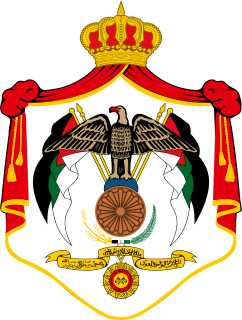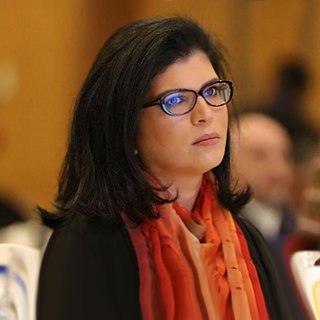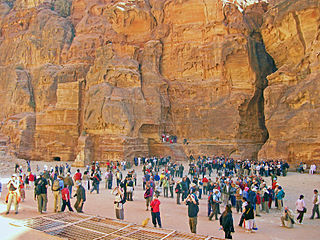

The Hashemite Plaza is a plaza in Amman, Jordan that spans over an area of 50,000 square metres. It was renewed in 2014 and is named after the Jordanian royal family, the Hashemites.

Amman is the capital and most populous city of Jordan, and the country's economic, political and cultural centre. Situated in north-central Jordan, Amman is the administrative centre of the Amman Governorate. The city has a population of 4,007,526 and a land area of 1,680 square kilometres. Today, Amman is considered to be among the most modernized Arab cities. It is a major tourist destination in the region, particularly among Arab and European tourists.
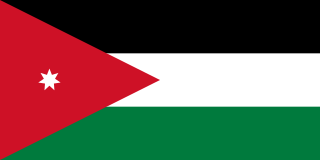
Jordan, officially the Hashemite Kingdom of Jordan, is an Arab country in Western Asia, on the East Bank of the Jordan River. Jordan is bordered by Saudi Arabia to the south, Iraq to the north-east, Syria to the north and Israel and Palestine to the west. The Dead Sea is located along its western borders and the country has a small coastline to the Red Sea in its extreme south-west, but is otherwise landlocked. Jordan is strategically located at the crossroads of Asia, Africa and Europe. The capital, Amman, is Jordan's most populous city as well as the country's economic, political and cultural centre.

The Hashemites are the ruling royal family of Jordan. The House was also the royal family of Syria (1920), Hejaz (1916–1925) and Iraq (1921–1958). The family belongs to the Dhawu Awn, one of the branches of the Hasanid Sharifs of Mecca – also referred to as Hashemites – who ruled Mecca continuously from the 10th century until its conquest by the House of Saud in 1924. Their eponymous ancestor is Hashim ibn Abd Manaf, great-grandfather of the Islamic prophet, Muhammad.
The Hashemite Plaza includes open spaces, fountains, gardens, parking lots and cafes. It is equipped with a centre that hosts cultural activities like the Amman Book Festival. The plaza is flanked by two of the most popular Roman ruins of Amman, the Roman theatre and the Odeon, while the Nymphaeum is just a short distance away. The Citadel Hill, which towers over the Plaza, offers good views of it. [1] [2]
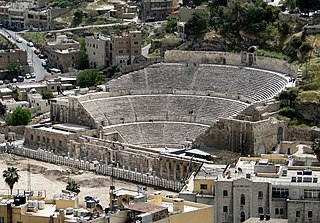
Amman's Roman Theatre is a 6,000-seat, 2nd-century Roman theatre. A famous landmark in the Jordanian capital, it dates back to the Roman period when the city was known as Philadelphia. The theatre and the nearby Odeon are flanking the new Hashemite Plaza from the south and the east respectively, while the Roman Nymphaeum is just a short stroll away in south-westerly direction.
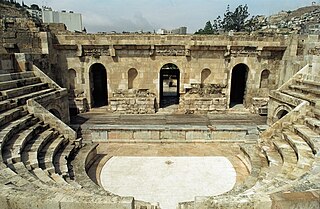
The Odeon is a small 500-seat theatre in Amman, Jordan. Not to be confused with the large Roman Theatre that stands right next to it, on the southern side of the Hashemite Plaza, while the Odeon stands on the east side of the Plaza.
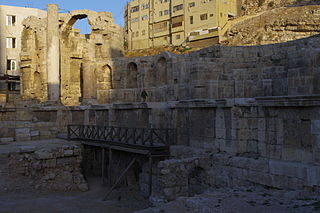
The Nymphaeum is a partially preserved Roman public fountain in Amman, Jordan. It is located a short distance from the Hashemite Plaza, the Roman Theater and the Odeon, at the crossing of Ibn al-Atheer and Quraysh streets in al-Balad. Such fountains were very popular in Roman cities, and Philadelphia, as Amman was known by ancient Greeks and Romans, was no exception. This nymphaeum is believed to have contained a 600 square meters pool which was three meters deep and was continuously refilled with water.
